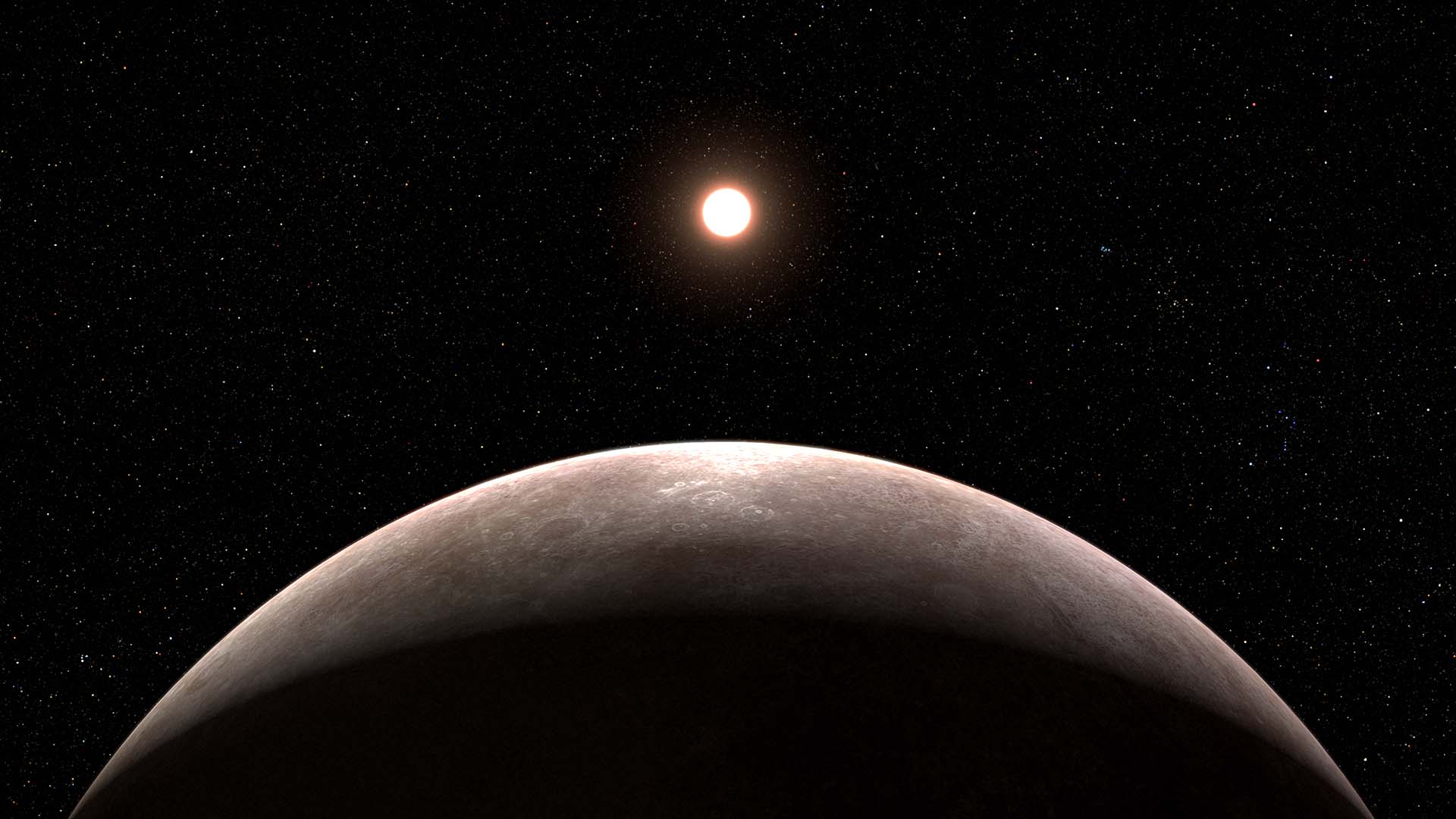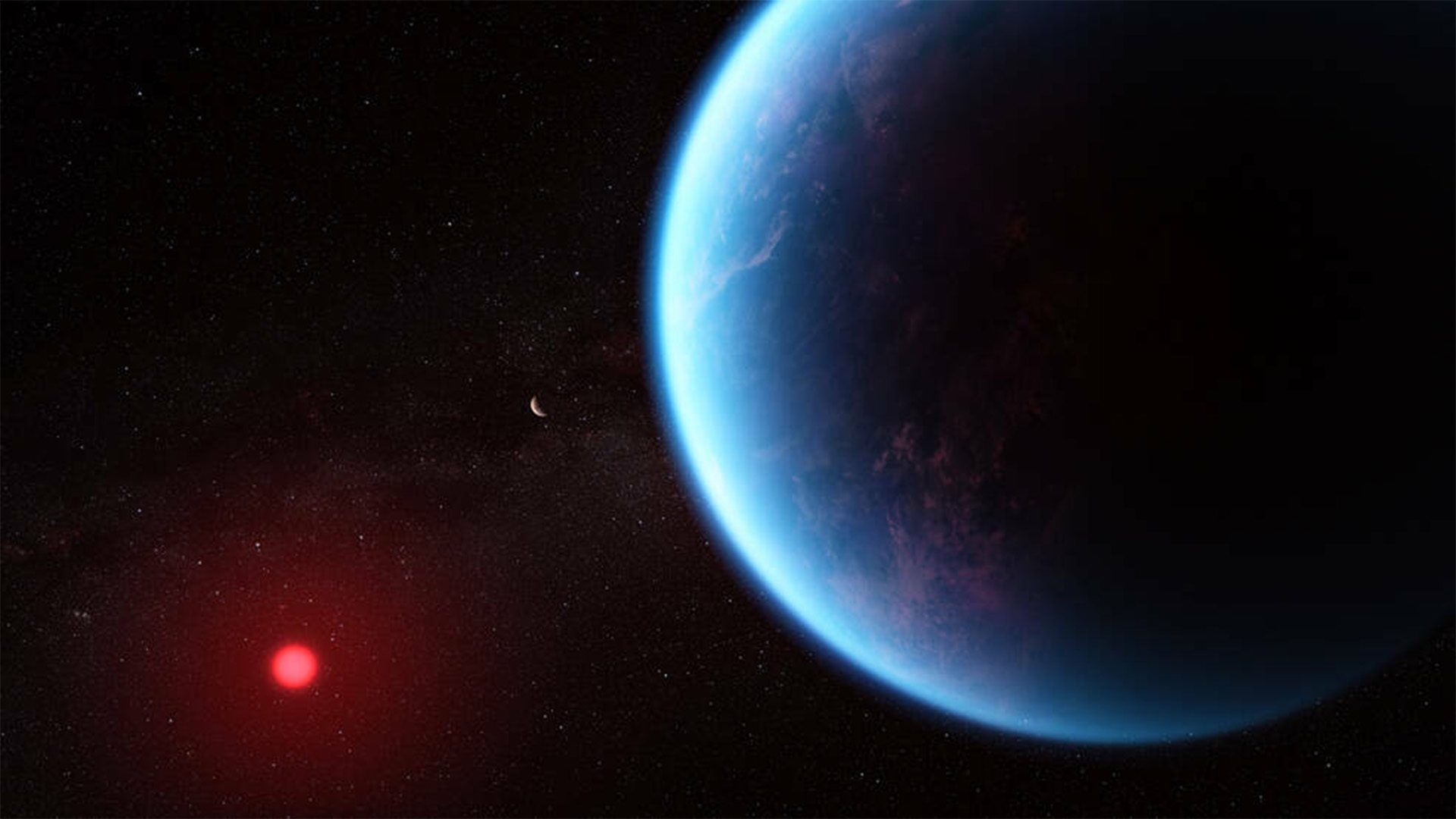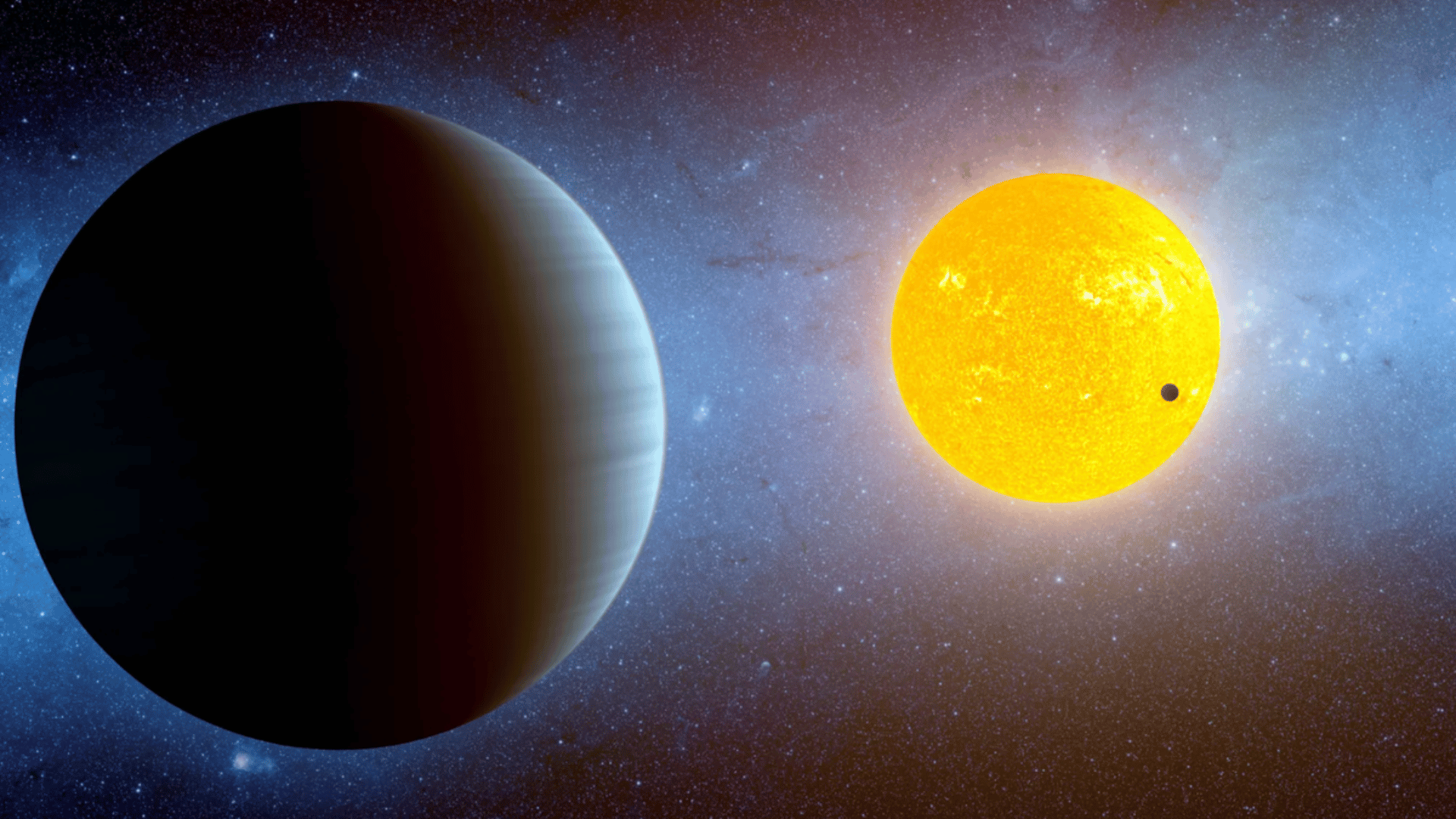Researchers using NASA’s James Webb Space Telescope (JWST) may have discovered signs of an atmosphere around a rocky exoplanet. The hot, rocky exoplanet is called 55 Cancri e, and it’s 41 light-years from Earth. According to NASA researchers, it’s the best evidence of a rocky planet with an atmosphere outside our solar system.
Super-Hot Super-Earth Exoplanet
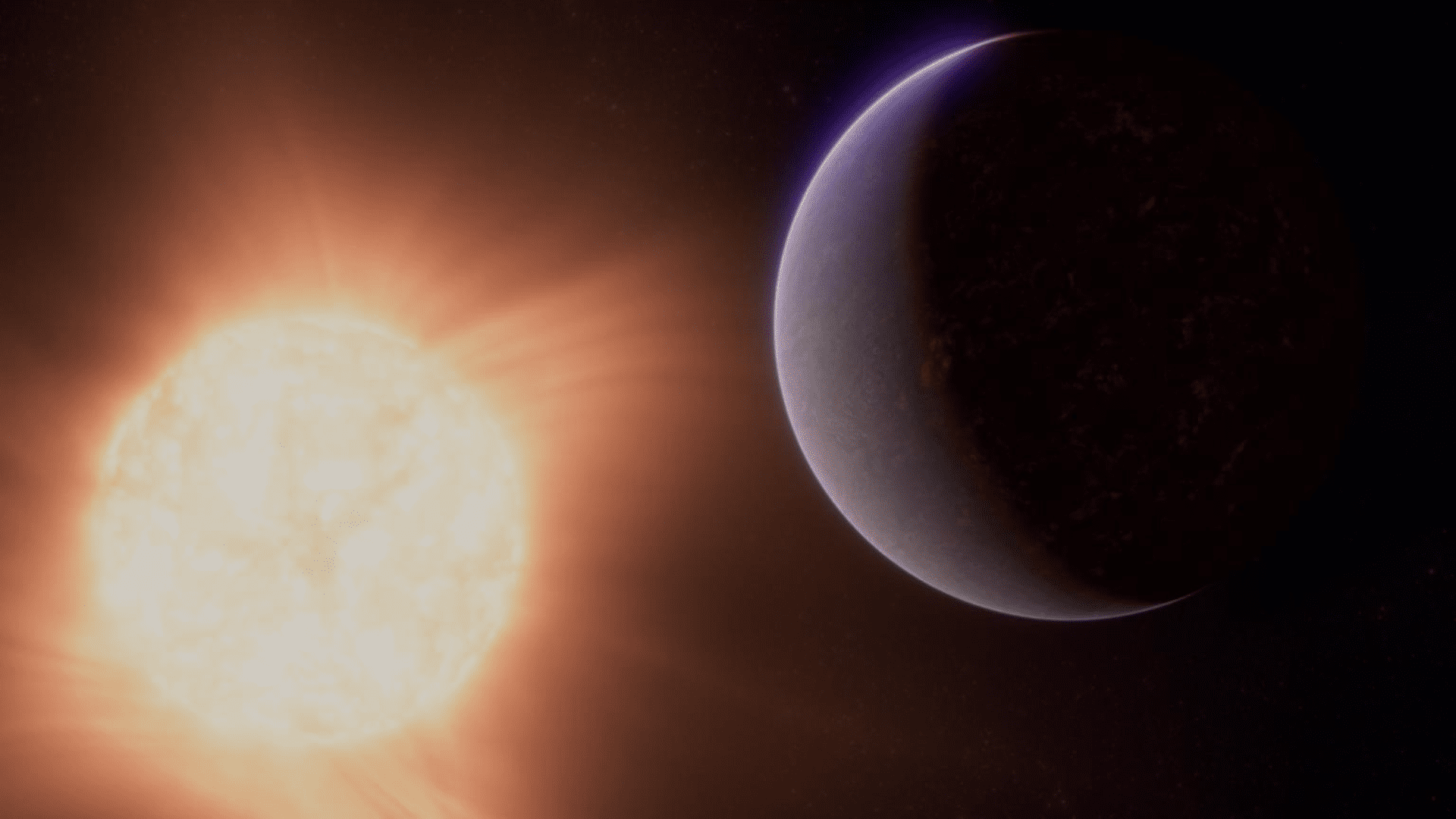
In 2023, the James Webb Telescope discovered its first exoplanet. Now, it sheds light on 55 Cancri e. The exoplanet is one of five known planets orbiting the Sun-like star Cancri in the constellation Cancer. The rocky planet, also known as Janssen, has a diameter twice the size of Earth’s and slightly greater density. This planet is classified as a super-Earth. It’s larger than Earth, smaller than Neptune, and likely similar in composition to the rocky planets in our solar system.
According to researchers, describing the exoplanet as “rocky” may leave the wrong impression. The surface is likely molten or a bubbly ocean of magma because of how close 55 Cancri e is to its star. They say the exoplanet has a tight orbit, most likely tidally locked, with a dayside facing the star at all times and a nightside in eternal darkness.
Astronomers discovered the exoplanet in 2011, but in spite of a number of observations, there are still questions. For example, there’s the question of whether the exoplanet has an atmosphere. Moreover, could the exoplanet even have one because of extreme temperatures, radiation, and wind from its star? These questions are all unanswered.
“I’ve worked on this planet for more than a decade,” said Diana Dragomir, an exoplanet researcher at the University of New Mexico and co-author of the study. “It’s been really frustrating that none of the observations we’ve been getting have robustly solved these mysteries. I am thrilled that we’re finally getting some answers!”
Rocky planets tend to have thin and dense atmospheres that make them elusive compared to gas planets. According to NASA, the atmospheres surrounding gas planets are easier to spot.
Cooler than Expected
The first indication of 55 Cancri e having a substantial atmosphere came from temperature measurements. These measurements were based on its thermal emissions or the heat given off in the form of infrared light. If the exoplanet is covered in molten rock, with little or no atmosphere, NASA says the dayside should be around 4,000 degrees Fahrenheit.
“Instead, the MIRI (Mid-Infrared Instrument) data showed a relatively low temperature of about 2,800 degrees Fahrenheit,” said Renyu Hu from NASA’s Jet Propulsion Laboratory, the lead author of the paper published in Nature. “This is a very strong indication that energy is being distributed from the dayside to the nightside, most likely by a volatile-rich atmosphere.” Scientists say currents lava can carry some heat to the nightside. However, they cannot move it efficiently enough to cause a cooling effect.
When the team looked at NIRCam (Near-Infrared Camera) data, they noticed patterns consistent with a volatile-rich atmosphere. “We see evidence of a dip in the spectrum between 4 and 5 microns — less of this light is reaching the telescope,” explained co-author Aaron Bello-Arufe, also from NASA JPL. He said, “This suggests the presence of an atmosphere containing carbon monoxide or carbon dioxide, which absorb these wavelengths of light.” According to researchers, a planet with no atmosphere or one consisting of vaporized rock would not have this spectral feature.
Yamila Miguel is from the Leiden Observatory and the Netherlands Institute for Space Research (SRON). Miguel is also the co-author of the study. “We’ve spent the last ten years modeling different scenarios, trying to imagine what this world might look like,” she said. “Finally getting some confirmation of our work is priceless!”
Explore Tomorrow's World from your inbox
Get the latest science, technology, and sustainability content delivered to your inbox.
I understand that by providing my email address, I agree to receive emails from Tomorrow's World Today. I understand that I may opt out of receiving such communications at any time.
An Ocean of Bubbling Magma
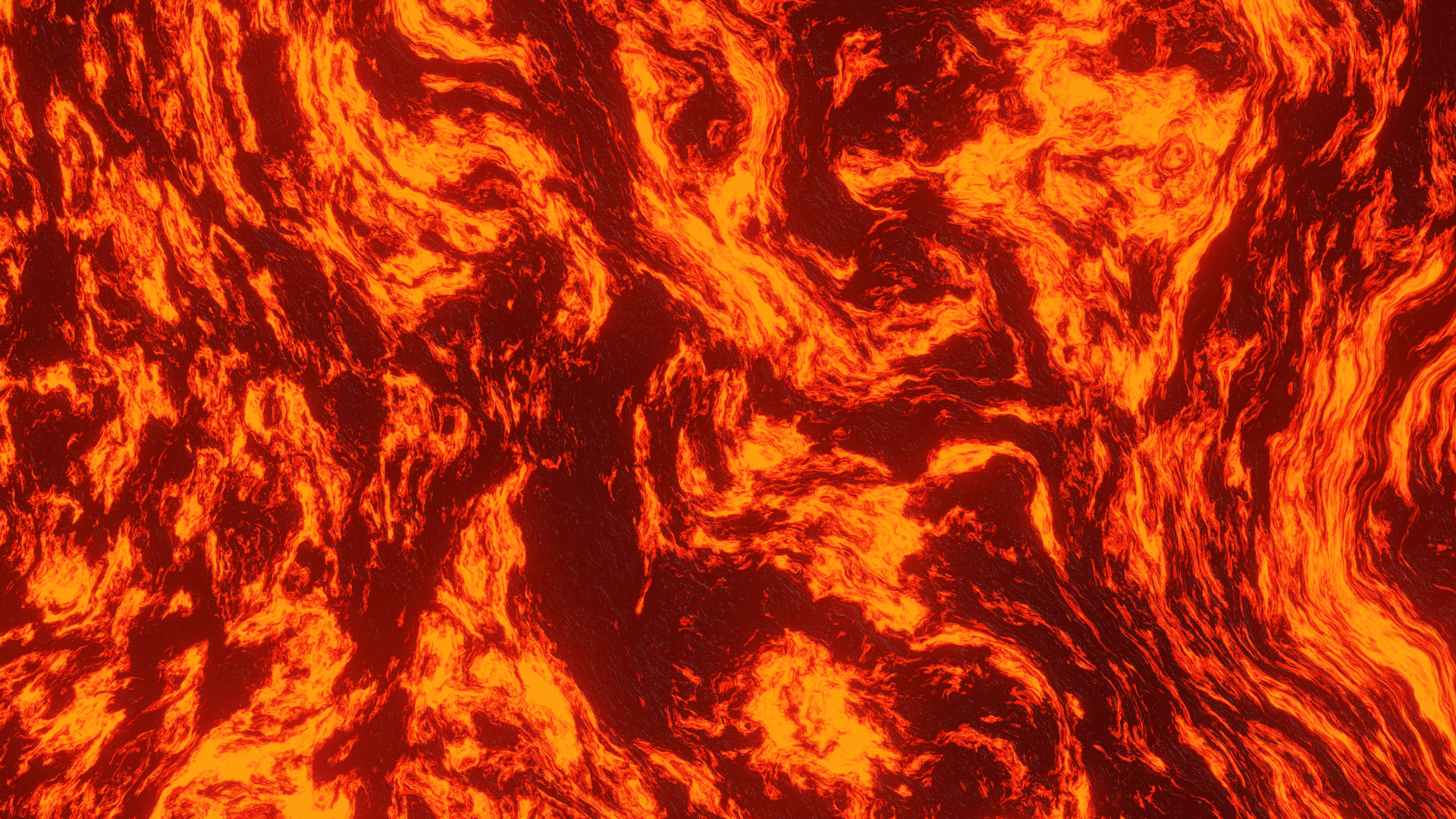
The team thinks the gases covering 55 Cancri e would be bubbling out from the interior, rather than being present ever since the exoplanet formed. “The primary atmosphere would be long gone because of the high temperature and intense radiation from the star,” said Bello-Arufe. “This would be a secondary atmosphere continuously replenishes by the magma ocean. Magma is not just crystals and liquid rock; there’s a lot of dissolved gas in it, too.”
55 Cancri e is far too hot for life. However, researchers believe it is a unique opportunity to study interactions between atmospheres, surfaces, and interiors of rocky planets. For example, this is a good chance to peak into the early conditions of Earth, Venus, and Mars. Astronomers believe they also had magma oceans far in the past.
Hu said, “Ultimately, we want to understand what conditions make it possible for a rocky planet to sustain a gas-rich atmosphere: a key ingredient for a habitable planet.”



